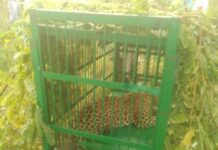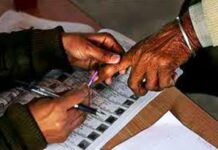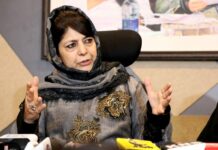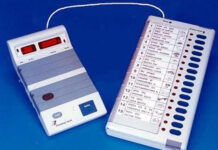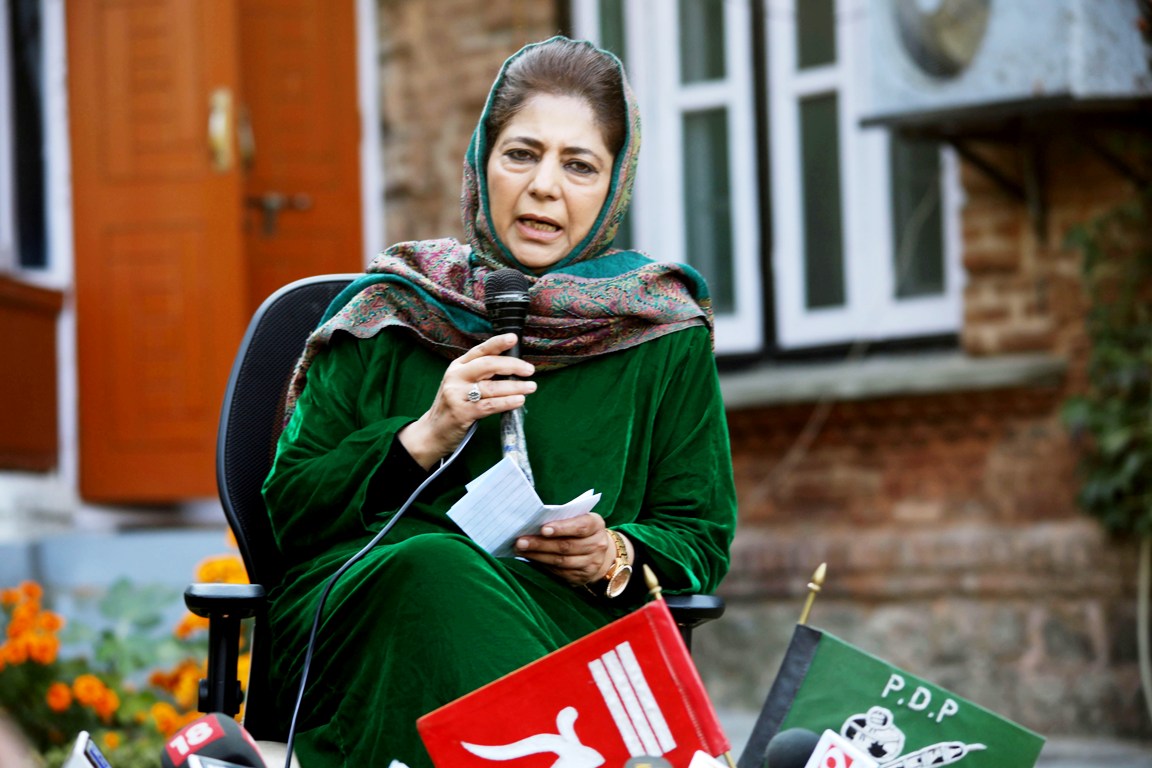by Tasavur Mushtaq
SRINAGAR: Two months ago, when the army along with police and CRPF executed a counter-insurgency operation in remote Amshipora village of Shopian, three “unidentified” militants claimed to be Jaish-e-Muhammad operatives were killed in a “clean and collateral damage free” operation. In between, the quick pressers revealed “incriminating material, arms and ammunition” were recovered from the slain trio.
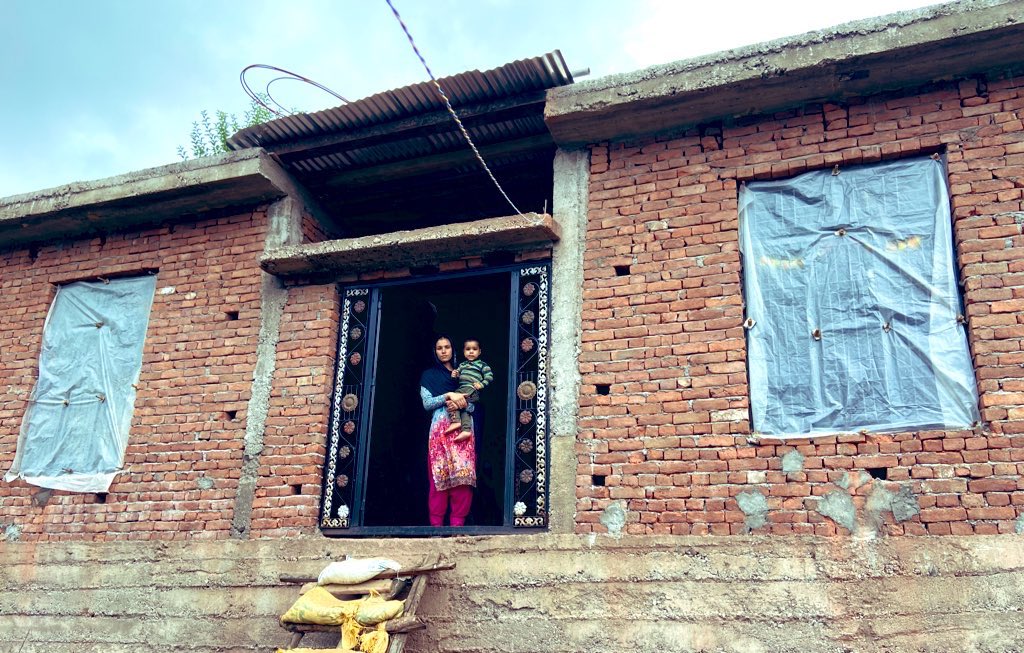
Later, the police drove bodies to Baramulla for burial and next encounter at Kulgam, around the same time put Shopian story at the backseat. However, as families faraway in Rajouri searched for their relatives, Shopian was back at the stage.
Two Months Later
Two months later, buried as “unidentified militants” in Baramulla, the army in its inquiry report identified the slain alleged militants as missing labourers, residents of Rajouri. “The evidence collected by the inquiry has prima facie indicated that the three unidentified terrorists killed in Op Amshipora were Imtiyaz Ahmed, Abrar Ahmed and Moh(amma)d Ibrar, who hailed from Rajouri. Their DNA report is awaited. Their involvement with terrorism or related activities is under investigation by the police,” army spokesperson Col Rajesh Kalia said in a statement.
Revealing the details of the probe, army in a rare admission said: “The inquiry ordered by the army authorities into operation Amshipora has concluded. The inquiry has brought out certain prima facie evidence indicating that during the operation, powers vested under the AFSPA 1990 were exceeded and the do’s and don’ts of the chief of army Staff (COAS) as approved by the Hon’ble Supreme Court have been contravened. Consequently, the competent disciplinary authority has been directed to initiate disciplinary proceedings under the Army Act against those found prima-facie answerable”.
“Indian Army is committed to the ethical conduct of operations. Further updates on the case will be given periodically without affecting due process of the law of the land,” it said.
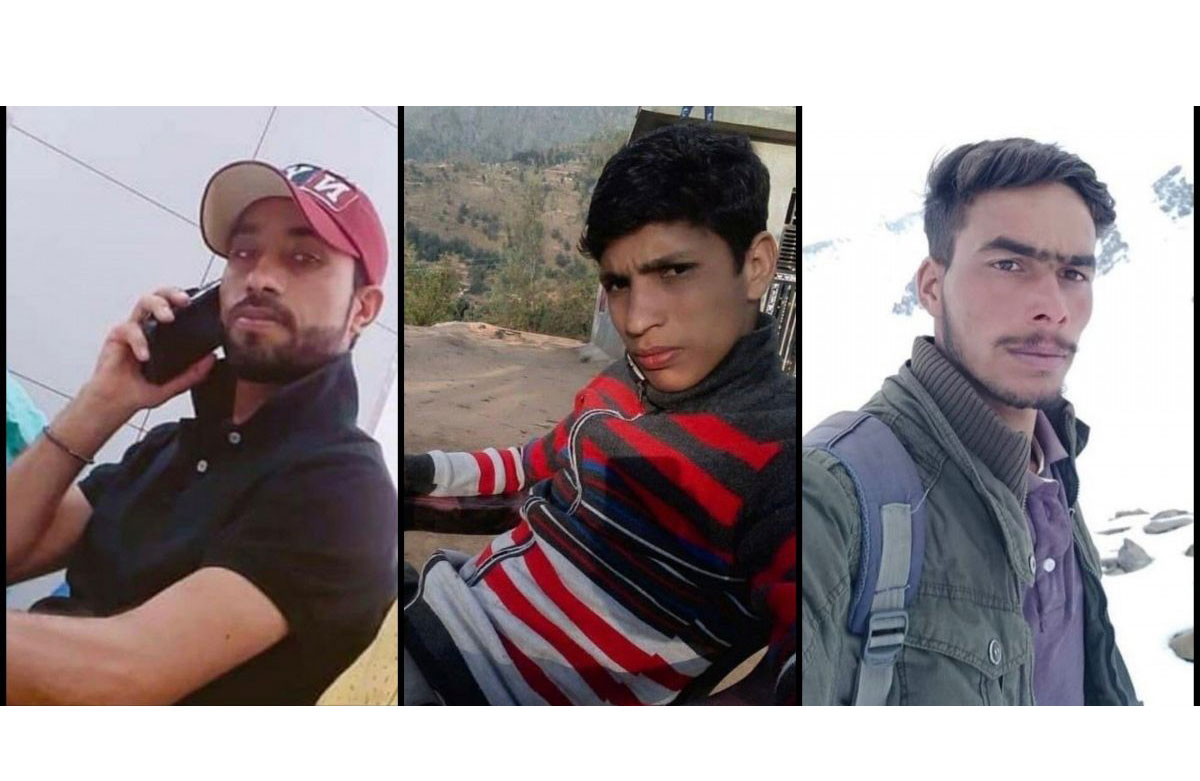
In its report, The Telegraph terms the army statement as the “jargon-riddled admission” (of the guilt) and reports that the army continued to describe the three youths as “unidentified terrorists” although it added that their “involvement with terrorism” was under police investigation. The statement did not clearly say whether the youths had been killed in a fake encounter or whether they were civilians.
The former police chief of the erstwhile state of J&K S P Vaid termed killing of innocents as most “heinous” crime. In his Twitter post, he wrote, “Killing innocent youth and show(ing) them as terrorists is most heinous crime and those involved should be charged for murder.”
Jammu activist Guftar Ahmad, who has been spearheading the campaign for justice for the families, said they were feeling hopeful now. “This has given us hope. The families are relieved. We are waiting for the DNA report after which we hope the bodies will be returned to their families for burial (in Rajouri),” Guftar told The Telegraph.
The Encounter
On July 18, 2020, security grid claimed three “militants” were killed in an operation. Giving details, it was said that an early morning gunfight erupted in orchards of Shopian’s Amshipora village when the forces personnel launched an operation based on a tip-off about the presence of militants in the area. “Three militants have been killed in the operation and their bodies were recovered from a cowshed, where they were hiding,” a police official said. “Militants opened fire when zeroed in,” he added.

The operation was carried by a joint team of Police, Army’s 62 RR, and CRPF. However, the identity and the affiliations of the slain militants could not be ascertained immediately. Police said identification of the slain militants was being done and the bodies were sent to Baramulla for burial.
An army statement issued in Srinagar confirmed that three militants had been killed in the operation. With this the security grid claimed, 136 militants have been killed in the valley till mid-July.
“Joint Operation was launched today early morning. The Security Forces were fired upon while laying the cordon, from the cowshed of the lone house in the orchard. Firelight ensued. Joint Operation in progress,” the army said.
Army Inputs
Jammu and Kashmir police in its handout said that the encounter was executed on inputs from the 62 battalion of the Rashtriya Rifles. “On a specific input by 62RR about [the] presence of terrorists in village Amshipora area of district Shopian, an operation was launched by them in the said area,” a police spokesman said. He also claimed that the police and paramilitary CRPF joined later.
Detailing the operation, 12-sector commander Brigadier Ajay Kotach told reporters that “we were also getting inputs of presence of certain identified Pakistani terrorists in the area.” He also claimed that army recovered “arms, ammunition and IED material from the slain trio.”
A Month Later
The families in Rajouri were anxious to know about the well-being of their missing sons. Labourers by profession, the three cousins, Abrar Ahmad, 21, Imtiyaz Ahmad 26, and Mohammad Ibrar, 18, had left for Shopian on July 16 to earn their livelihood. On July 17, a local of Rajouri Lal Hussain confirmed to the media that Imtiyaz Ahmad, one among the three youth informed him that the trio reached Shopian safely where they have taken a room on rent. Since then the families had no information. Concerned, the families filed a missing report with the local police in Rajouri.
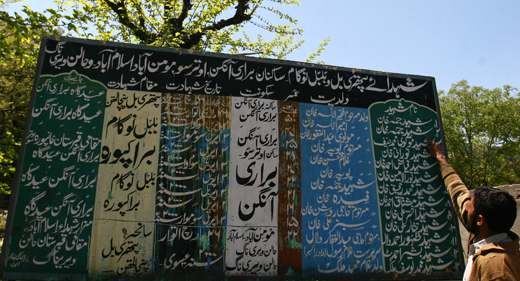
As the news of encounter spread and later few pictures of the slain youth were shared on the social media, the families on the basis of photographic evidence claimed that the youth dubbed as “militants” were actually their relatives who had gone to Shopian for work. With these revelations, the Amshipora encounter came under a cloud. Though police said identities were not known immediately, families claimed that all the three were carrying Aadhaar cards when they left home.
Reacting to the emerging situation and claims made by the families, the army launched an investigation. “We have noted social media inputs linked to the operation in Shopian on July 18, 2020. The three terrorists killed during the operation have not been identified and the bodies were buried based on established protocols. The army is investigating the matter,” defence spokesman, Colonel Rajesh Kalia, said in a statement.
Further to establish the claim, the DNA samples were taken under the aegis of Jammu and Kashmir Police.
Families Plea
The relatives of slain youth back home demand the culprits should be hanged. Talking to the Indian Express, Mohammad Yusuf, the father of Abrar Ahmed said: “I want the bodies of all the three children who were close relatives. All the three children were innocent and they have been killed in cold blood. I want those responsible to be hanged.”

As quoted by the newspaper, Yusuf has also expressed concern over the delay in the DNA report. “Our samples were collected on August 13. The administration should intervene to get the report at the earliest, otherwise, we will be compelled to launch a protest,” he said.
The families also demanded that the “source” who branded the three young men as “terrorists” to the army for “rewards and awards” be exposed.
Lal Hussain, uncle of slain youth talked to Hindustan Times demanding punishment to the guilty. “We have lost three young men. I demand that those involved in the fake encounter and the contact who branded my nephews as terrorists and passed on the information security forces be punished under the law of the land.”
The father of one of the youths had said to The Telegraph that there were seven retired and serving soldiers in his family, including a Kargil war veteran.
Politicians Protest
Back in the parliament, National Conference president and central Kashmir MP Dr Farooq Abdullah along with his party colleague and MP from south Kashmir Hasnain Masoodi protested in parliament against fake encounters and custodial deaths in Kashmir. The duo wants the process of justice to be expedited.
Earlier in his speech, Dr Abdullah demanded compensation for the killing. “I am happy that the army has admitted that three Shopian men were killed mistakenly. I hope the government gives a hefty compensation,” he said.

NC vice-president Omar Abdullah reacted on Twitter, “The families of the three murdered men had continued to proclaim their innocence. Disciplinary action initiated by the army would suggest the army agrees with the families. The process must remain transparent & the guilty must face the full weight of the law.”
Writing from the handle of her mother and former chief minister Mehbooba Mufti, Iltija Mufti wrote “Past enquiries into fake encounters like Pathribal & Machil were futile because the offenders weren’t punished. At most they are a PR exercise to blunt criticism & avert embarrassment. Laws that give unbridled impunity to armed forces must go as GOI claims militancy has decreased.”
AFSPA Again
Army’s admission on killings in Shopian encounter is likely to bring attention back on the AFSPA, which grants near-absolute immunity to security personnel in ‘disturbed area’. Invoked on July 5, 1990, all 20 districts of the UT are covered under the AFSPA where the forces have a shield against any legal action for their acts of omission and commission. The act empowers forces personnel to conduct operations anywhere and arrest anyone without a warrant.
In the last three decades, there have been a series of charges against forces for misusing its special powers. In certain cases, inquiries were instituted and a few of these found soldiers guilty, but what happened thereafter was not made public, reinforcing doubts of people in such investigations. As on date, not a single member of the security forces deployed in the erstwhile state has been tried for human rights violations in a civilian court.
The Past Re-links
Shopian incident is turning out to be reminiscent of the Pathribal and Machil “encounters” in which the “terrorists” killed turned out to be innocent civilians.
Pathribal dates back to 2000. The 7 Rashtriya Rifles (7RR) carried out an operation to take down five “foreign militants” in the forests of Pathribal in Anantnag. Subsequently, it was claimed the slain men were responsible for shooting 36 Sikh men in Chittisinghpora, five days before, on March 20, 2000.
Later what surfaced was a shock. The five slain “militants” were actually residents of villages around Pathribal, who had been “abducted by army and police in a couple of days before the encounter.”As the news spread, protests erupted and killings took place. As reported, 49 civilians were killed in the first 15 days.
The inquiry was initiated. In its charge-sheet filed on May 9, 2006, the CBI held the army’s 7 Rashtriya Rifles responsible for the killings, accusing five of its personnel, Brigadier Ajay Saxena, Lt Col Brajendra Pratap Singh, Major Sourabh Sharma, Major Amit Saxena and Subedar Idrees Khan of “cold-blooded murder”.
“There was tremendous psychological pressure on the army to show results after the massacre of 35 Sikhs,” the CBI said in its report. “The encounter was stage-managed with a view to obliterate the identity of the killed persons with an oblique motive.”
However, the case is lingering now on for years after the army refused to cooperate in the CBI investigation, invoking the Armed Forces (Special Powers) Act (AFSPA). The army had earlier dubbed the victims as Lashkar-e-Taiba militants and made this announcement before the then Union home minister L K Advani, who was on a visit to Chattinsinghpora.
Machil ‘Encounter’
After ten years of Pathribal, the north Kashmir witnessed Machil massacre. It was 2010. The army claimed to have foiled the infiltration bid on the LoC near Kupwara by killing three militants. It also claimed to have recovered five AK rifles, a large cache of ammunition and Pakistani currency from their possession.
However, back home, the sudden disappearance of the youth, who lived in three different mohallas of Nadihal, led the families to file missing reports with the police after days of unsuccessful search. It was the police investigation which finally took the lid of the fake encounter, revealed the bodies were buried in Machil and finally led to a charge-sheet of the 11 accused – nine army personnel including a colonel, two majors and two civilians. They were charged under Sections 302 (murder), 364 (abduction), 120-B (criminal conspiracy) and 34 (common intent) of the Ranbir Penal Code.

The case was being heard by Sopore chief judicial magistrate, who issued a notice to the army to produce the accused before the police, based on the charge sheet. The army, however, refused to follow the court’s direction and the case finally landed in the high court which struck down the lower court ruling, allowing the army to order a court of inquiry.
The findings of the inquiry led to the court-martial of the accused in December 2013. The accused were finally sentenced to life in 2014 by Summary General Court Martial (SGCM). The award was confirmed by the army on September 7, 2015. It was for the first time the army had confirmed life imprisonment to its men by a general court-martial for their involvement in killing civilians in a fake encounter. Omar, the then chief minister termed the decision as “watershed moment”. The killings had triggered outrage across Kashmir. It turned into an uprising in which over 120 people, mostly youths, were killed and hundreds were injured.
But later in 2017, the armed forces tribunal’s passed a verdict to suspended the life sentence of the five accused army personnel of 4 Rajputana Rifles who were convicted by a General Court Martial in 2014 for staging the killings.





